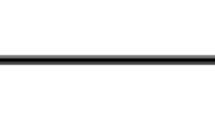Abstract
Reasoning about causation in fact is an essential element of attributing legal responsibility. Therefore, the automation of the attribution of legal responsibility requires a modelling effort aimed at the following: a thorough understanding of the relation between the legal concepts of responsibility and of causation in fact; a thorough understanding of the relation between causation in fact and the common sense concept of causation; and, finally, the specification of an ontology of the concepts that are minimally required for (automatic) common sense reasoning about causation. This article offers a worked-out example of the indicated analysis. Such example consists of: a definition of the legal concept of responsibility (in terms of liability and accountability); a definition of the legal concept of causation in fact (in terms of the initiation of physical processes by an agent and of the provision of reasons and/or opportunities to other agents); CausatiOnt, an AI-like ontology of the common sense (causal) concepts that are minimally needed for reasoning about the legal concept of causation in fact (in particular, the concepts of category, dimension, object, agent, process, event and act).
Similar content being viewed by others
References
L. Aqvist P. Mullock (1989) Causing Harm – A Legal – Logical Study Walter de Gruyter Berlin
Baldwin, R. A. and Neufeld, E. (2004). The structural model interpretation of the ness test. In Advances in Artificial Intelligence, Proceedings of the 17th Conference of the Canadian Society for Computational Studies of Intelligence
P. Dowe (1995) ArticleTitleCausality and conserved quantities: A reply to Salmon. Philosophy of Science Philosophy of Science 62 321–333
Green, L. (1930). Judge and Jury. Kansas City
H. Hart T. Honoré (1985) Causation in the Law Oxford University Press Oxford
Hulswit, M. (1998). A semeiotic account of causation – The cement of the Universe from a Peircean perspective. PhD thesis, Katholieke Universiteit Nijmegen: Nijmegen.
Lehmann, J. (2003). Causation in Artificial Intelligence and Law – A modelling approach. PhD thesis, Department of Computer Science and Law, Faculty of Law, University of Amsterdam, Amsterdam.
D. Lewis (1973) ArticleTitleCausation. Journal of Philosophy Journal of Philosophy 70 556–567 Occurrence Handle10.2307/2025310
J. Mackie (1974) The Cement of the Universe – A Study in Causation Oxford University Press Oxford
Mill, J. (1886). A System of Logic Ratiocinative and inductive. London
J. Pearl (2000) Causality Cambridge University Press Cambridge
Prakken, H. and Renooij, S. (2001). Reconstructing causal reasoning about evidence: a case study. In Proceedings of the Legal Knowledge and Information Systems – Jurix 2001
Russell, B. (1912). On the notion of cause. Proceedings of the Aristotelian society 1: 26.
B. Russell (1948) Human Knowledge Simon and Schuster New York
B. Russell (1984) A History of Western Philosophy Unwin Paperbacks London
W. Salmon (1984) Scientific Explanation and the Causal Structure of the World Princeton University Press Princeton, NJ
A. Valente (1995) Legal Knowledge Engineering – A Modelling Approach IOS Press Amsterdam
Author information
Authors and Affiliations
Corresponding author
Rights and permissions
About this article
Cite this article
Lehmann, J., Breuker, J. & Brouwer, B. Causation in AI and Law. Artif Intell Law 12, 279–315 (2004). https://doi.org/10.1007/s10506-005-4157-y
Published:
Issue Date:
DOI: https://doi.org/10.1007/s10506-005-4157-y




